It’s quite impossible to speak of the evolution of the web without a reference to decentralization. Characterized by blockchain technology, Web3 projects encompass various innovations such as NFTs, DeFi, gaming and metaverses. Brands in Web3 need to be sure their communications are not stuck in Web1.
Recent market research indicates the Web3 market size is valued between USD 2.18 billion and USD 3.34 billion, with projections to reach 81.5 billion by 2030; roughly equivalent to the GDP of Luxembourg. These numbers estimate the size of the Web3 market, but it’s still difficult to fully seize the demographics that populate it. And while the existence of initiatives to push for diversity in Web3 founders and investors leads us to guess the profiles behind many of the incognito display pictures online, anonymity is commonplace in Web3. This brings challenges for brand communications and marketing strategies — positioning, tone of voice, graphic design, and beyond.
With a market this big, of course Web3 has developed a distinct subculture, with particular codes and a unique “cryptolanguage.” From “GM, frens” to dApps, DAOs or NFTs, communicating in Web3 requires navigating specific jargon and engaging with a community that prioritizes user-centric interactions.
And with big companies like X (Twitter), Lufthansa, Lacoste and others experimenting with their own Web3 projects, communicating on Web3 to outside audiences means translating concepts and working on finding common grounds, intersections, and parallels to bridge two worlds.
In fact, a 2023 survey by YouGov-Consensys found that out of 15,000 people in 15 countries, 24% were at least aware of Web3, but only 8% said they were very familiar with it.

Web3 Communications
When communicating in Web3, connections, bonding, the sense of trust, even friendship is particularly valued. If Web3 is the backbone of a new, tokenized society, decentralization means users expect brands to authentically engage with their interests and values. There is an inherent desire to put users at the heart of the ecosystem because they are the foundation of Web3 and because the audience is often native or have been in Web3 for a long time. Social networks have played a vital role in facilitating direct interactions between brands and users in Web3. Their use, which is very frequent, is also very unique and has impacted the way one communicates and how things are advertised.
On the one hand, from Reddit to Discord to Twitter, social networks have gained follower traction and became an important vehicle for brands in Web3. Rather than distributing press releases, by sharing FAQs and hosting AMA sessions, brands offer an opportunity for users to connect with them directly, share thoughts, shape projects, and have privileged access to information.
On the other hand, with a generational divide reflected in the audience in Web3, users turning to social media rather than traditional media for information means influencer marketing can be an effective strategy. Indeed, relying on influencers has been a great part of marketing products in Web3 — so much that crypto influencers made the case for regulation in France. Understanding the key, reliable actors proves crucial to ensure brands are doing the right thing for them and for the ecosystem.
Influencers might have a lot to share from their experiences and accumulated knowledge. Yet, the world of communications is not only made of personal opinions. Factual, impartial information is crucial, and the need for independent Web3 press remains crucial for a healthy and prosperous ecosystem.
A few traditional media outlets have started to cover news in Web3, and some specialized media have also emerged. But the symbiotic relationship is still relatively new and much remains to be done to ensure a secure information flow within and outside Web3. It isn’t surprising that some great journalists lack a solid background in Web3, and some Web3 connaisseurs lack a solid journalistic training.
In short, one thing stands out: as new rules of communication in Web3 are still being written, brands can innovate the way PR is carried out, have an opportunity to educate audiences, and hold a responsibility in building a space where businesses thrive without prejudice to truthful information. They need communicators with the right ethos and the right set of competences to communicate about a product or a business in, from and to Web3 communities.
Resources: Some Web3 Media Outlets
- https://techcrunch.com/ (English)
- https://decrypt.co/ (English, French, Spanish, Arabic)
- https://www.coindesk.com/ (English, Spanish, French, Portuguese, Italian, Filipino, Ukrainian, Russian)
- https://cointelegraph.com/ (English)
- https://thedefiant.io/ (English)
- https://nftnow.com/ (English
- https://www.thebigwhale.io/ (English, French)
- https://blockworks.co/ (English)
- https://www.theblock.co/ (English)
- https://cryptoslate.com/ (English)
- https://www.wired.com/ (English)
- https://www.cointribune.com/ (English, French, Spanish)



